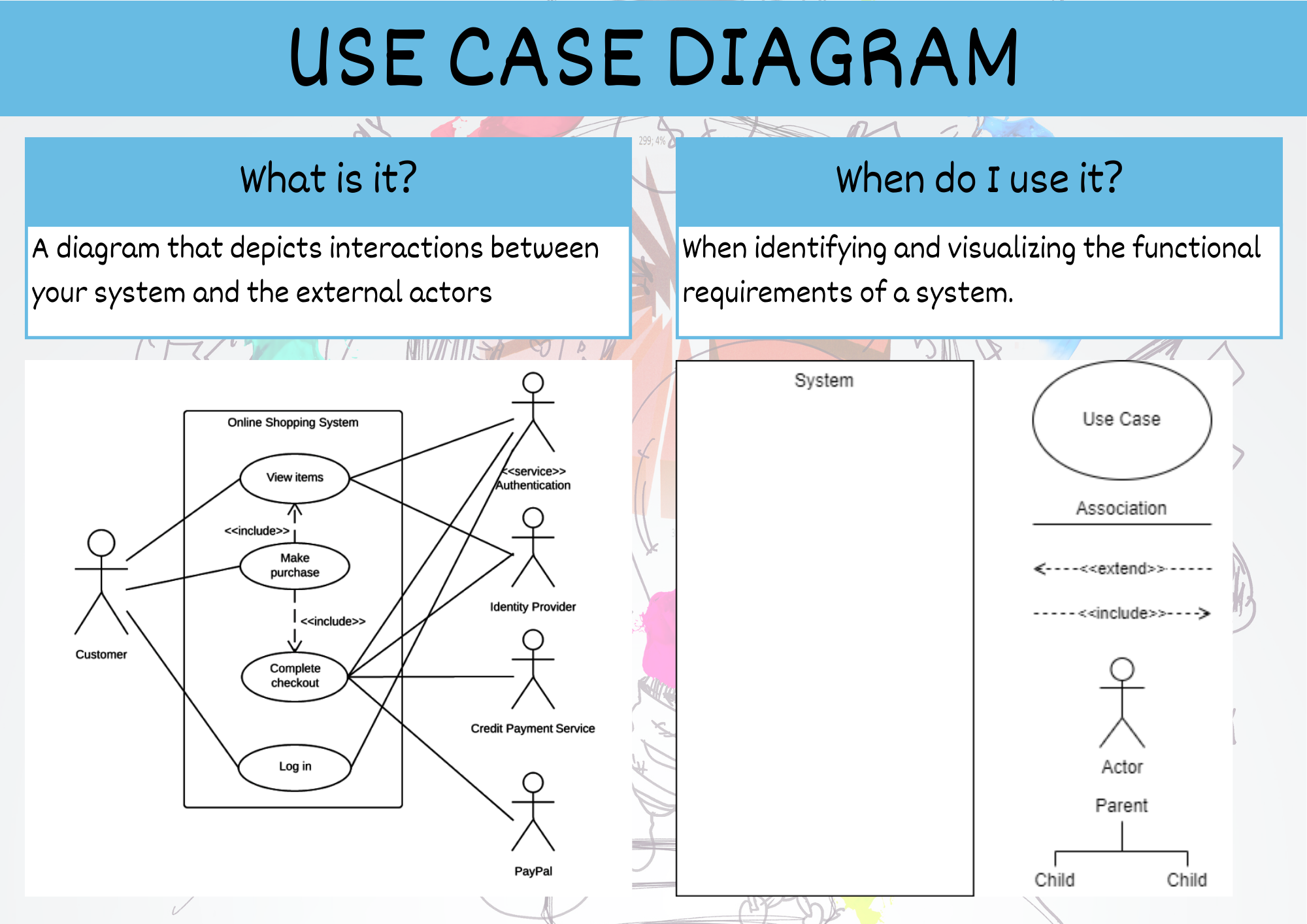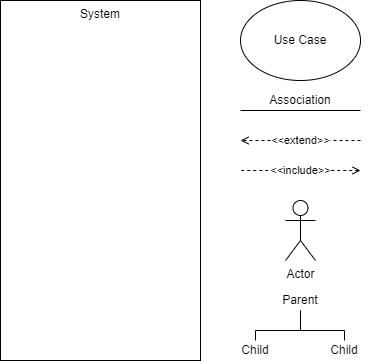Use Case Diagram — Unit 3#

Steps to create a Use Case Diagram#
What is the system being created?
Who are the actors using the system? (People, Organisations, Other systems, External devices)
Is each actor a primary actor or a secondary actor?
What actions will the primary actors want to do with the system?
How will each actor interact with the use cases?
Are the any new actions automatically connected to current use cases?
Are there any additional, optional actions connected to current use cases?
Do any use cases or actors have sub categories?
Use Case Diagram Symbols#

Checking the Use Case Diagram for Unit 3
When marking a Use Case Diagram the following questions are asked:
Are all the actors outside of the code base?
Do the primary actors (the ones on the left) initiate the interactions with the system?
Does the system initiate the interactions with the secondary actors (the ones on the right)?
Are all the UI interactions represented in the first column of Use Cases?
Are the connections between the primary actors and the first column of Use Cases all associations (solid lines)?
Are the conenctions between internal Use Case either extensions or inclusions?
Do all the extensions have callout detailing what conditions result in it’s execution.
Unit 3 subject matter covered:
Analyse a problem to identify and explain the elements of a system
Analyse a problem to identify and explain the observable interactions
Analyse a problem to identify and explain the inputs and outputs
Analyse a problem to identify and explain the control mechanism
Analyse a problem to identify and explain the processes and interactions using logical diagrams and consistent symbols
Analyse problems and information to determine and describe interactions in terms of inputs, processes and outputs
Analyse problems and information to determine boundary or scope of the problem
Generate a conceptual model of a possible solution by applying systems thinking that identifies system boundaries, properties, inputs and outputs, user interface, system controls [QCAA, 2017]
